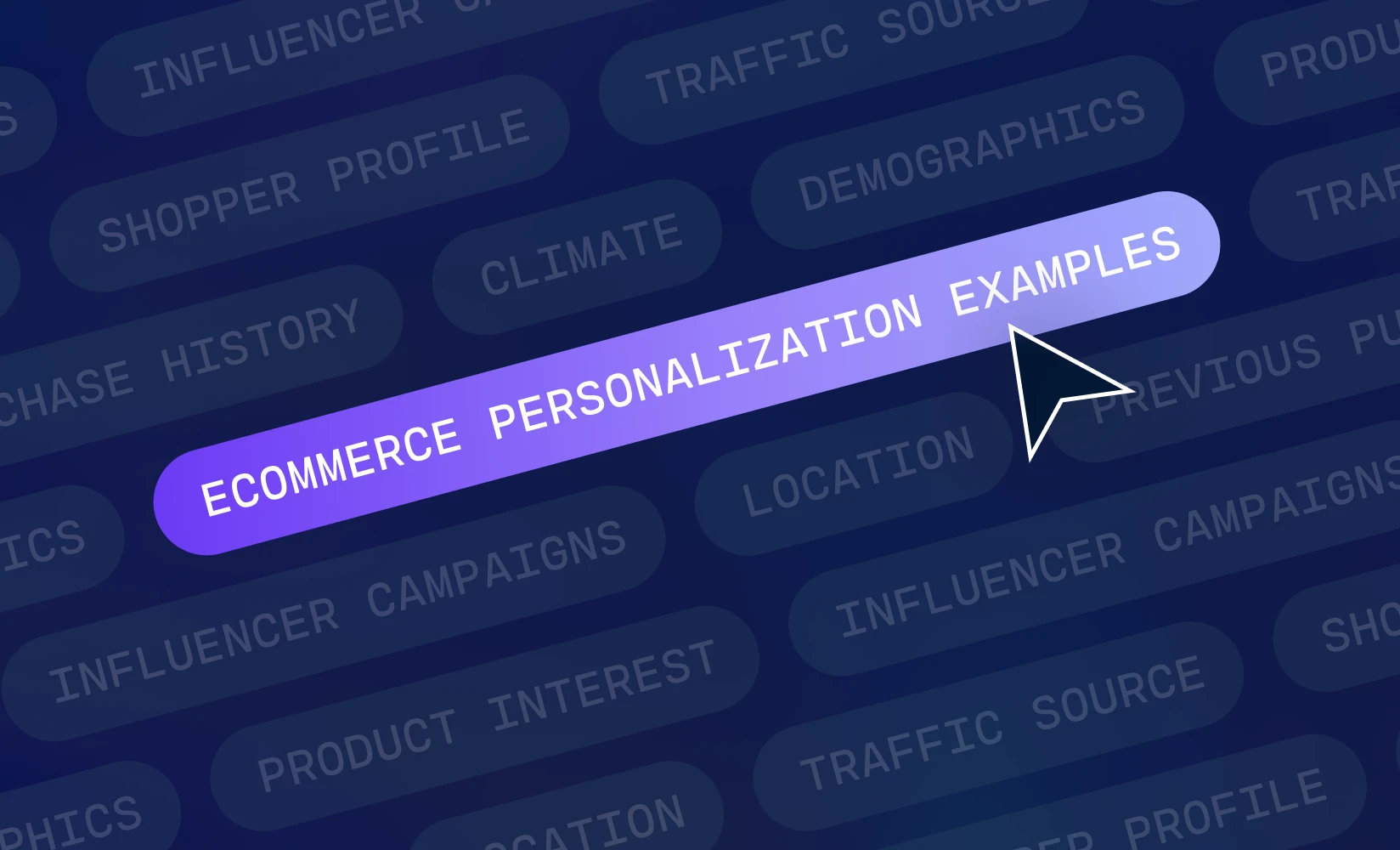
Whether you’re targeting just one individual or a group that includes millions of people, Shogun’s Personalization feature allows you to design and publish page variants that are only seen by a specific segment of your visitors.
Indeed, there are so many possibilities with personalized experiences that you might have trouble figuring out where you should even start.
Feel free to use this playbook for inspiration — the 40+ ecommerce personalization examples featured below are just a fraction of the ways you could use this tool to improve user experience, generate more sales, and ultimately make your online store more successful.
You can use personalization to control the experience of site visitors that are coming from a particular marketing source. This allows you to maintain high conversion rates as you scale multiple, diverse campaigns.
With over 3 billion monthly active users, Facebook is the biggest social media network in the world, making it a powerful source of traffic for merchants of all sizes. Personalization based on Facebook traffic can hit every touchpoint of the user experience.
Example #1. Display different products in the hero section of your homepage depending on which Facebook post directed the visitor to your website.
Example #2. Blog pages linked to from Facebook can be personalized to highlight products that were referenced in the Facebook post.
Example #3. Traffic to a product page from paid ads on Facebook can be shown a different demonstration video than the default version, building upon what they already saw on Facebook.
Pinterest is focused on visual content — it’s an excellent platform for ecommerce brands that sell to DIY enthusiasts, arts & crafts lovers, and aspiring chefs. Brands with large followings on Pinterest should certainly experiment with personalized experiences that target this traffic source.
Example #4. Food and beverage brands promoting their product as part of a larger recipe can create a customized product experience for Pinterest traffic that reviews how to incorporate the product into a meal at home.
Example #5. Crafts brands can sell more products by showing visitors from Pinterest a custom homepage that matches their crafting interests. For example, traffic from Pinterest posts about sewing can be shown a version of the homepage that promotes sewing machines, thread, etc.
YouTube is the second-largest search engine in the world behind Google. Users of this platform prefer to consume content in video form.
Example #6. When a product page receives traffic from YouTube, you can replace the hero image with a demonstration video to match the visitor’s preferred method for consuming information.
Example #7. Create a unique “featured products” section that matches the topic of one of your YouTube videos, then include this section in versions of your homepage and landing pages that you have linked to in the YouTube video description.
Like YouTube, TikTok is focused on video content. In this case, users love short clips that are personalized to their interests.
Example #8. Produce an alternate version of the hero video on your homepage that matches the topics driving TikTok users to your site.
Example #9. On your product pages, show TikTok testimonial videos to traffic coming from TikTok without displaying such videos to traffic coming from any other source.
Reddit is a collection of millions of individual forums known as subreddits. Any subreddits related to your brand can provide you with both potential customers and valuable social proof.
Example #10. Show Reddit users that your products are Reddit-approved by adding a slider to your homepage displaying screenshots of Reddit commenters giving your brand positive feedback.
Example #11. Use a customized banner to welcome Reddit shoppers who land on your most popular product pages.
Users on Instagram share and comment on photos and videos. In addition to marketing your products on Instagram, you can also use this platform to find user-generated content demonstrating how your products look and function in the real world (such content can then be used to make your marketing materials more authentic).
Example #12. Add an Instagram image gallery feed to product pages for traffic coming from an Instagram referral URL.
Example #13. Create custom links for each Instagram post, and then design a unique version of your homepage that features the same image as whichever post visitors are coming from. This establishes a seamless transition for the visitor as they click over from Instagram to your website.
Other businesses aren’t always the competition. By collaborating with another brand, you can reach an entirely new audience that hasn’t been exposed to your products yet.
Example #14. Personalize key pages to promote an exclusive discount for traffic referred by the co-marketing partner.
Example #15. Create blog content promoting products from a co-marketing partner that’s only displayed for certain traffic segments or time periods.
If you resell products made by others rather than manufacturing your own, your suppliers are yet another audience that you may receive traffic from. Even though this type of traffic likely won’t turn into sales, you should consider providing them with a personalized experience anyway.
Example #16. Customize product description copy and content for traffic that is referred from a supplier. By dedicating some more space to talking up where you get your products (you could highlight sustainable practices, good working conditions, etc.), you’ll be able to build better relationships with these important partners.
By collecting email addresses from the people who visit your site, you can reach out directly to prospects who are already familiar with your brand. This will help you turn visitors into customers as well as one-time customers into reliable repeat customers.
Example #17. Product recommendation widgets can be personalized based on email campaign URLs.
Example #18. Display discount banners that are customized for traffic coming from re-engagement email campaigns, encouraging customers who haven’t been active in a while to place another order.
Phone numbers may be even more valuable than email addresses. Some people only occasionally check their email, and with so many messages coming in it’s easy for yours to get lost in the shuffle. Conversely, most people always have their phones on them, and texts are much harder to ignore.
Example #19. For traffic that is driven by an SMS campaign, you can create a version of the page that is particularly well-designed for the small screens of mobile devices.
Even with all the cutting-edge digital marketing techniques that have been developed in recent years, there’s still a place for old-fashioned public relations in your marketing strategy. These methods are especially effective for reaching new customers and raising brand awareness.
Example #20. Traffic from a PR source can be shown a version of your “About” page that contains an approval badge from the recommending publication.
Example #21. At trade shows and conferences, provide printed materials with QR codes that lead to personalized landing pages welcoming visitors from the trade show or conference.
This is one of the fastest-growing trends in marketing, as total spending on influencer campaigns has jumped from $1.7 billion in 2016 to an estimated $24 billion in 2024.
It’s easy to see why this technique has become so popular — as with co-marketing, influencer campaigns allow you to tap into audiences that aren’t yet familiar with your brand, and an enthusiastic endorsement from an influencer is a potent form of social proof as well.
Example #22. Traffic from influencer campaigns can be shown a segmented version of your homepage containing images of the influencer using the product.
Example #23. Traffic from influencer campaigns can also be shown a segmented version of a product page containing video testimonials and active product demonstrations from the influencer.
To set up personalized experiences for influencer marketing in Shogun, the first step is to create a segment for the type of visitor you want to target. After downloading and installing the app, select the “Personalization” option in the left sidebar of the main dashboard.
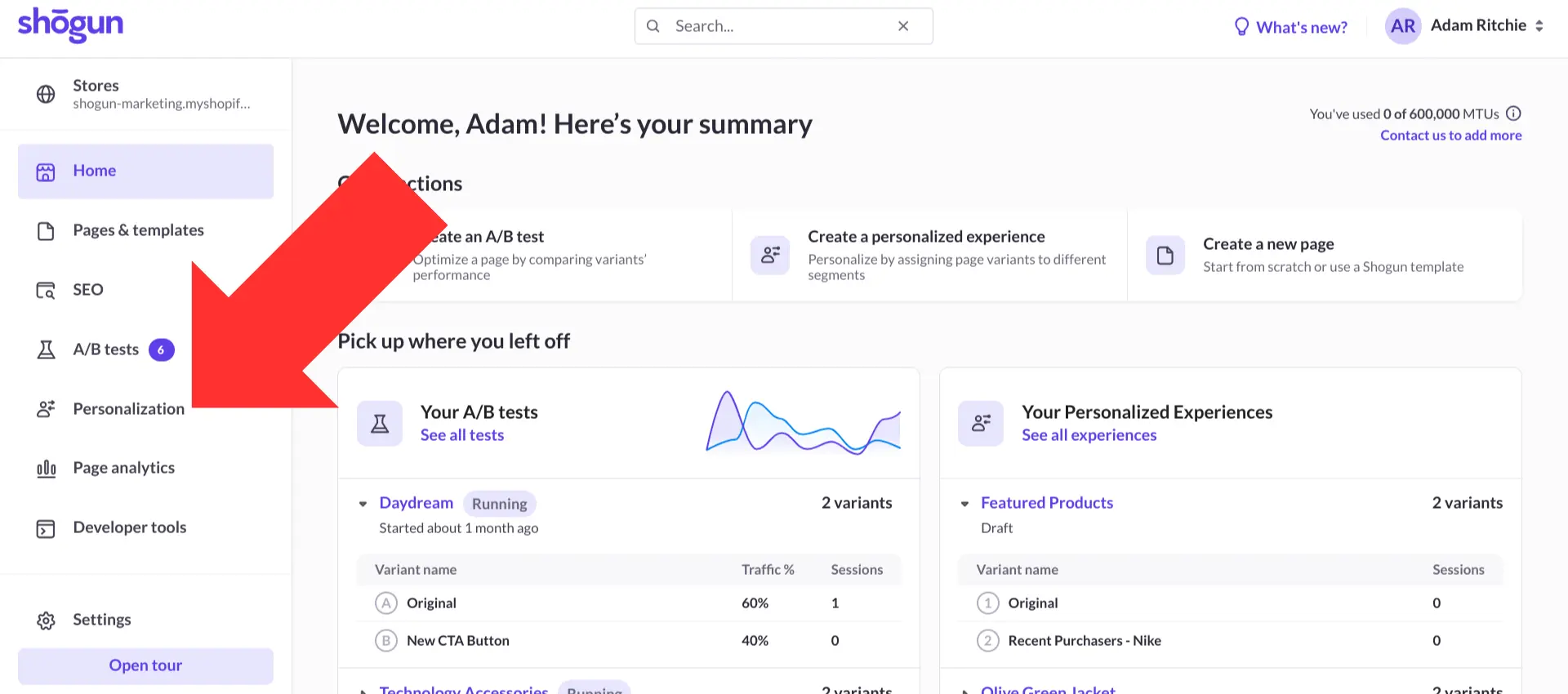
Select “Segments”.
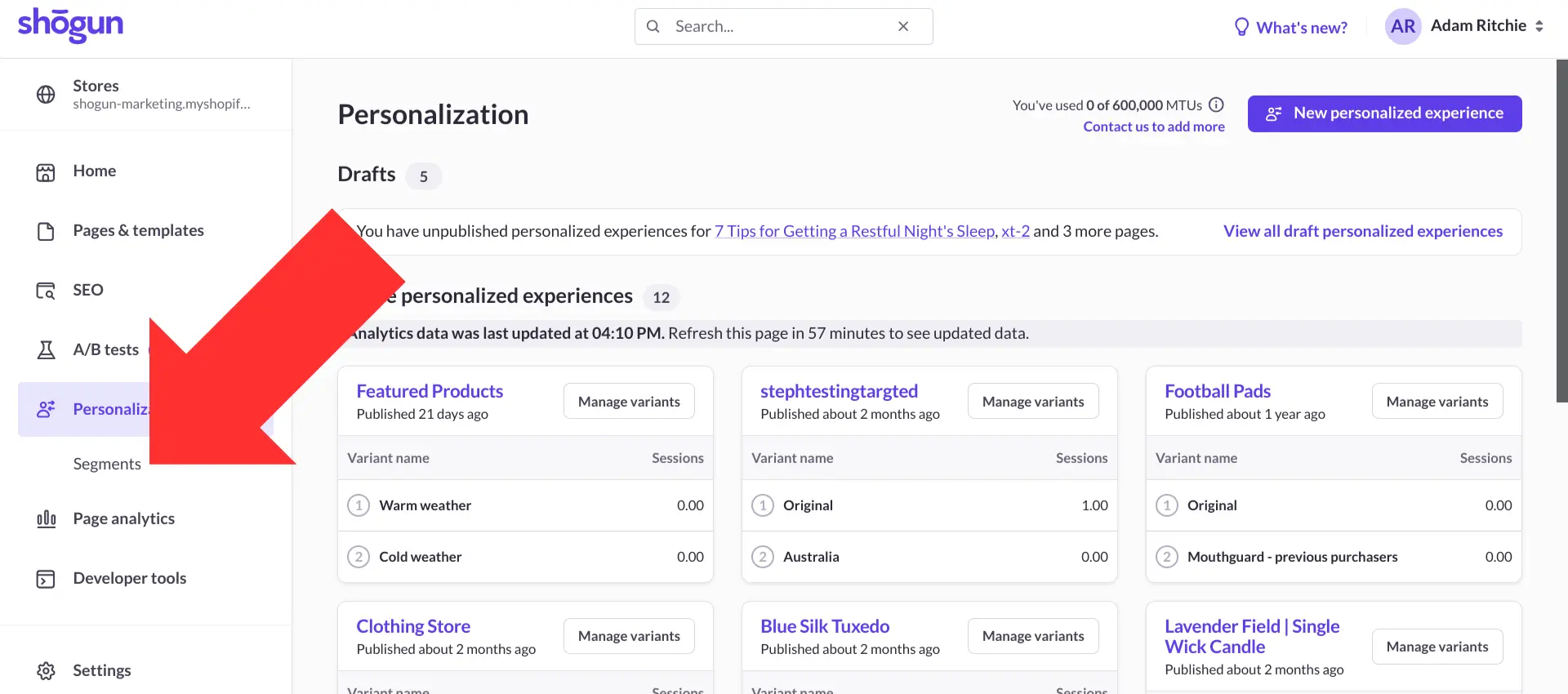
Select “Create segment”.
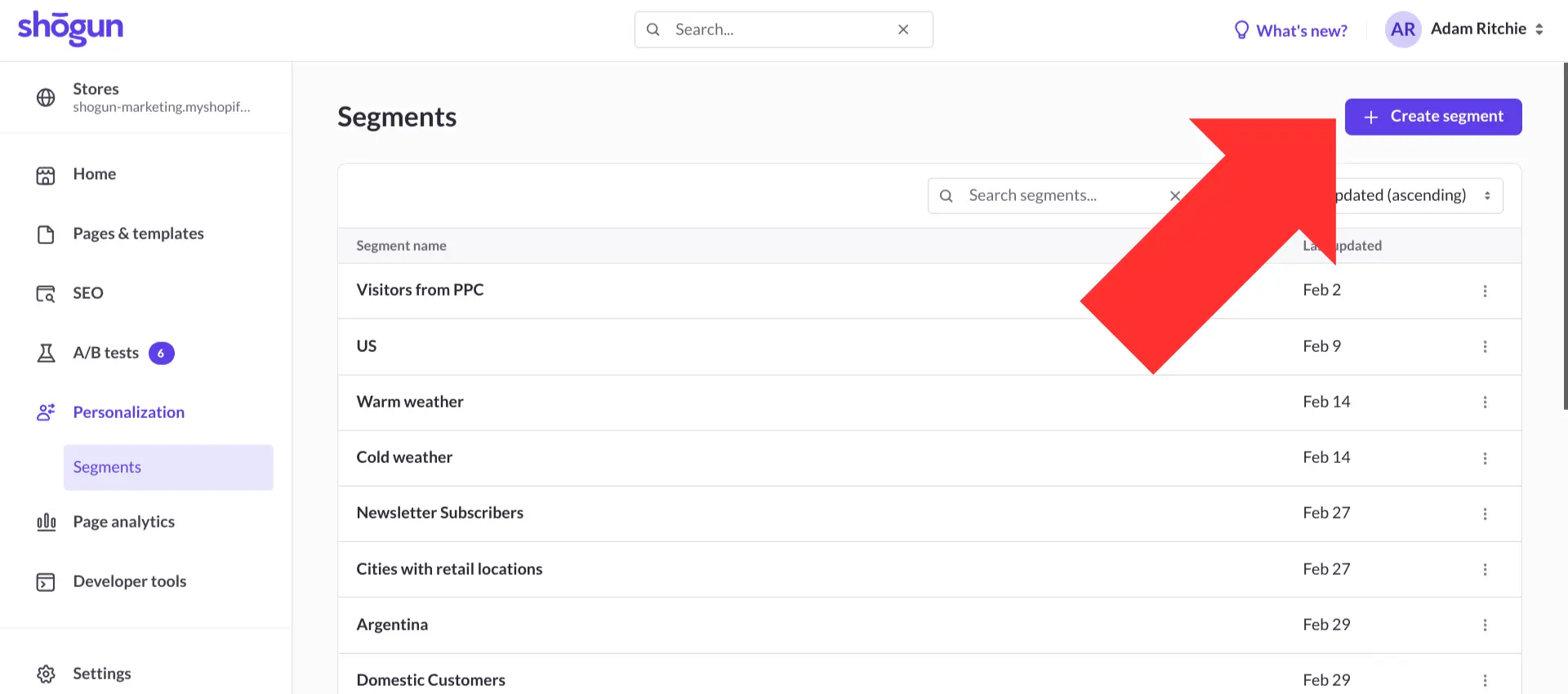
Open the condition dropdown menu and select “UTM”.
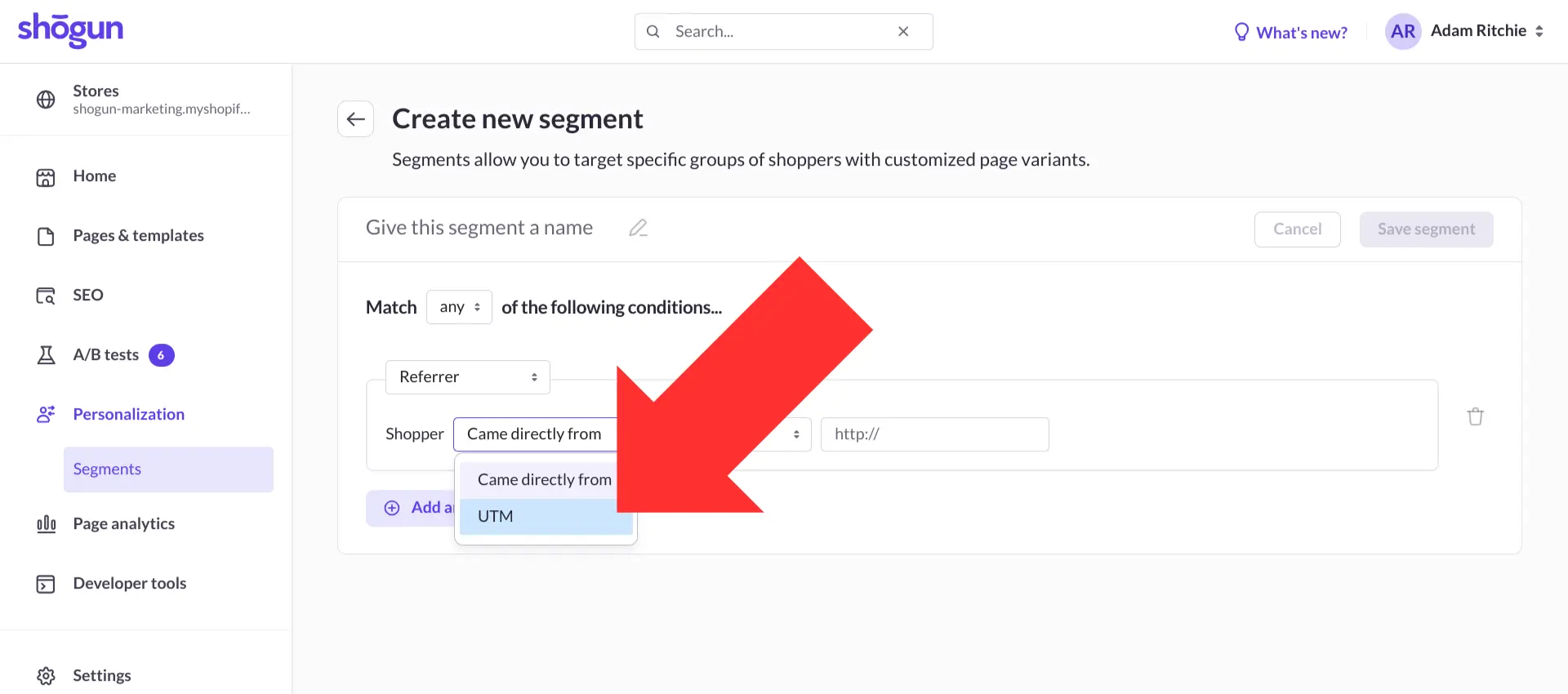
Enter the UTM tag associated with your influencer marketing campaign, choose a name for your segment, and then select “Save segment”.
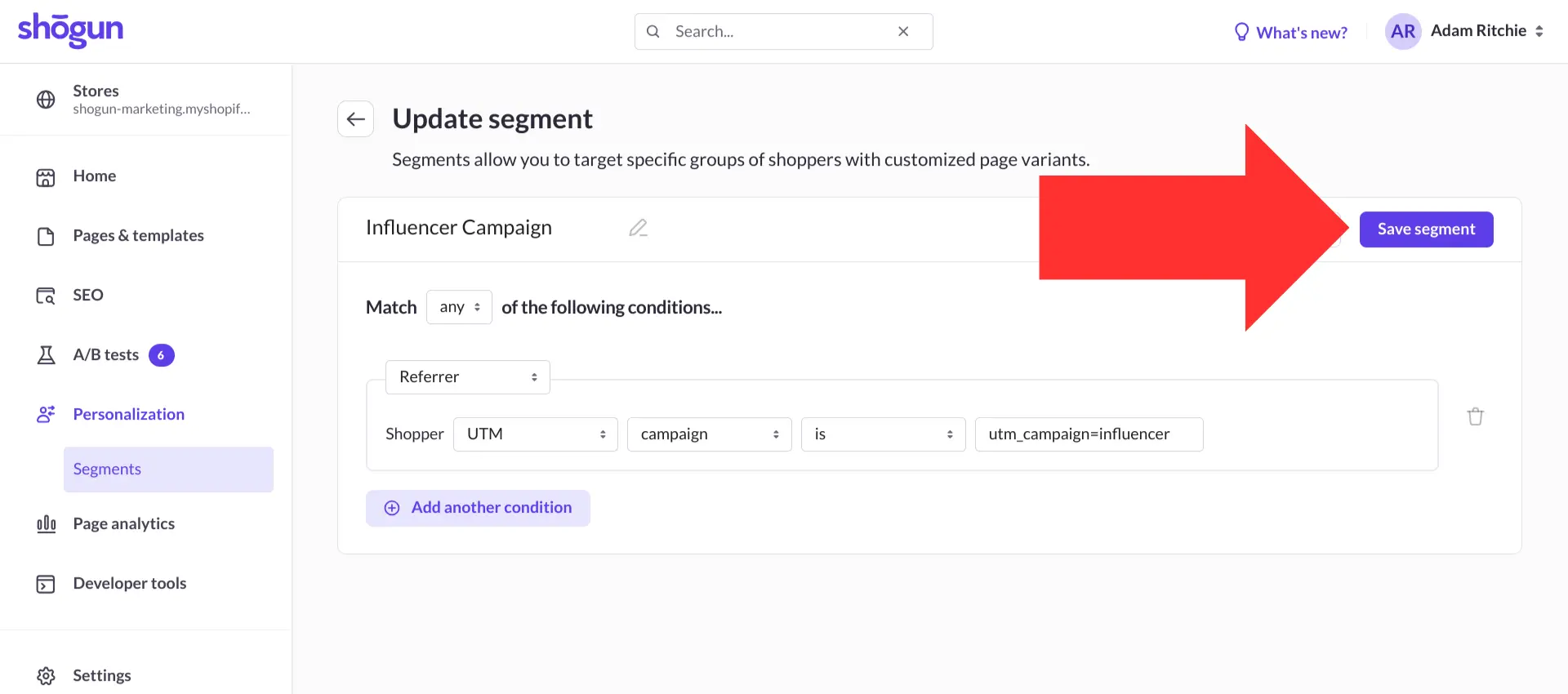
Select the “Pages & templates” option in the left sidebar of the main Shogun dashboard.
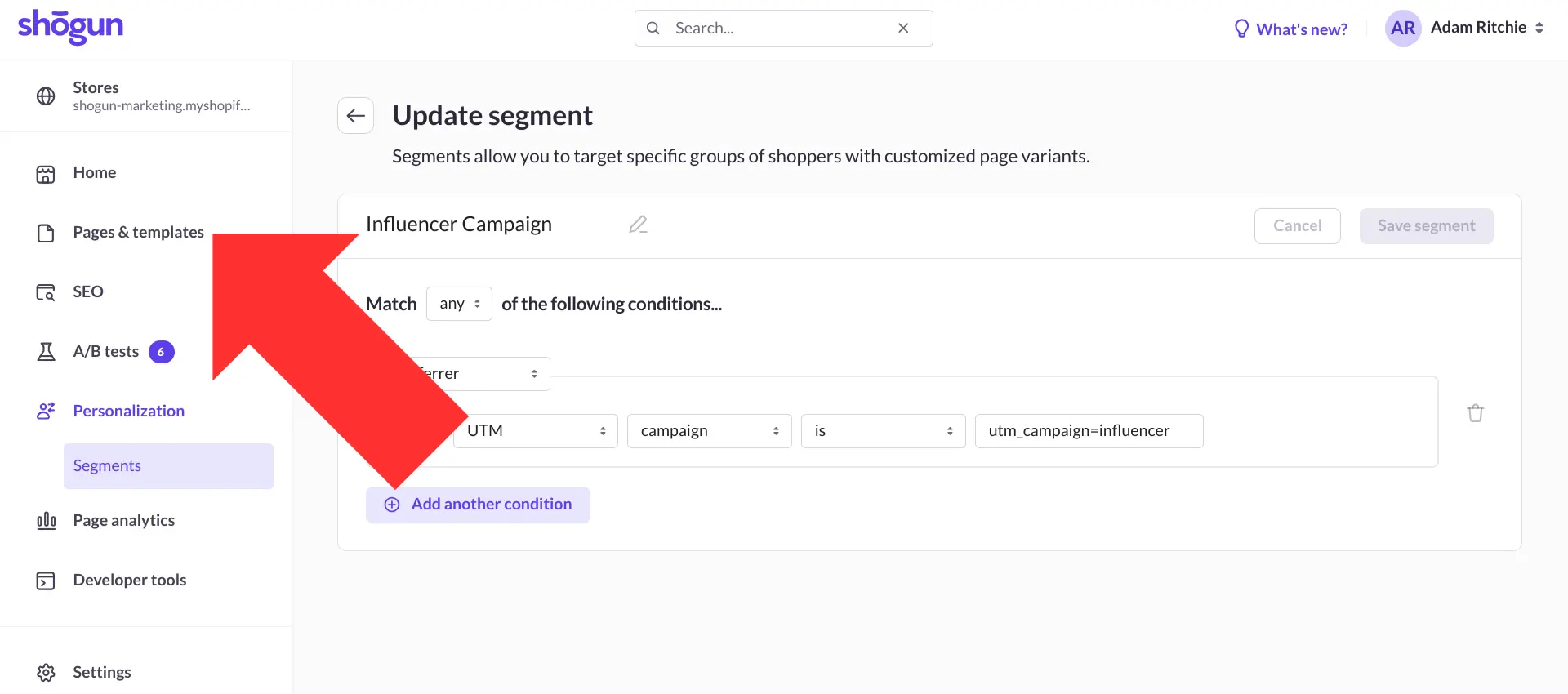
Open the page you want to personalize.
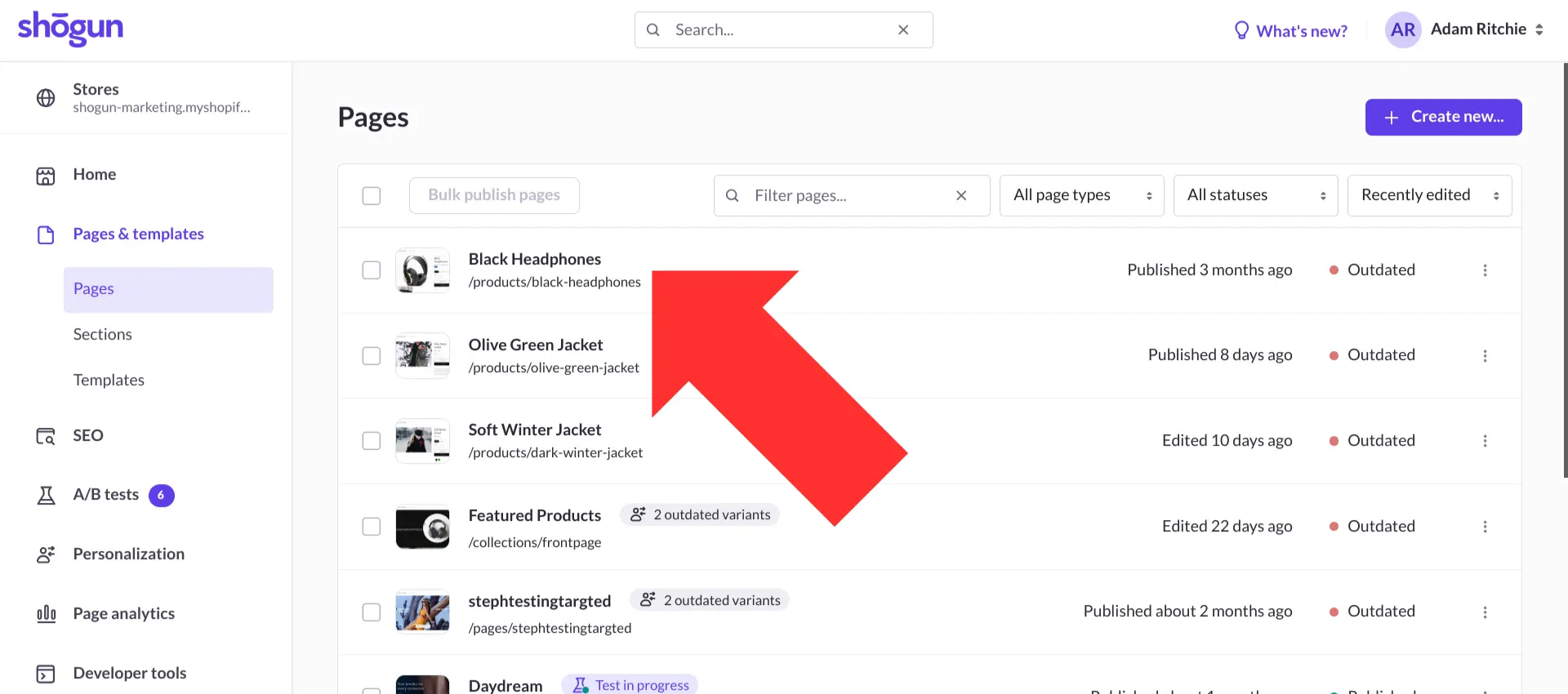
Click on the personalization icon, which is located near the top-right corner of the screen.

Toggle the “Enable personalization” option on.

In the “Show to segment” dropdown menu, select the segment you created for your influencer campaign earlier. Then, give your page variant a name and select “Add variant”.
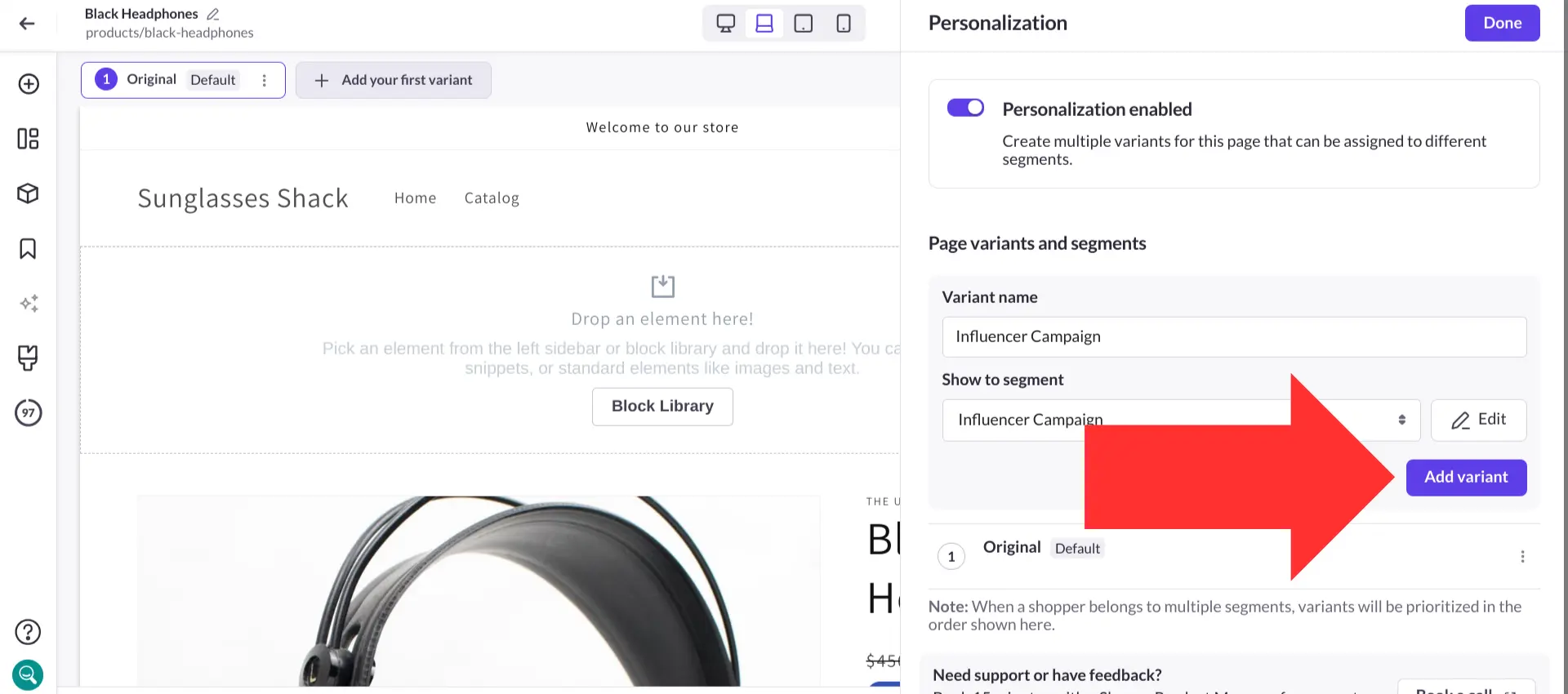
Use the tabs near the top of the page to toggle between which page variant you’re editing.
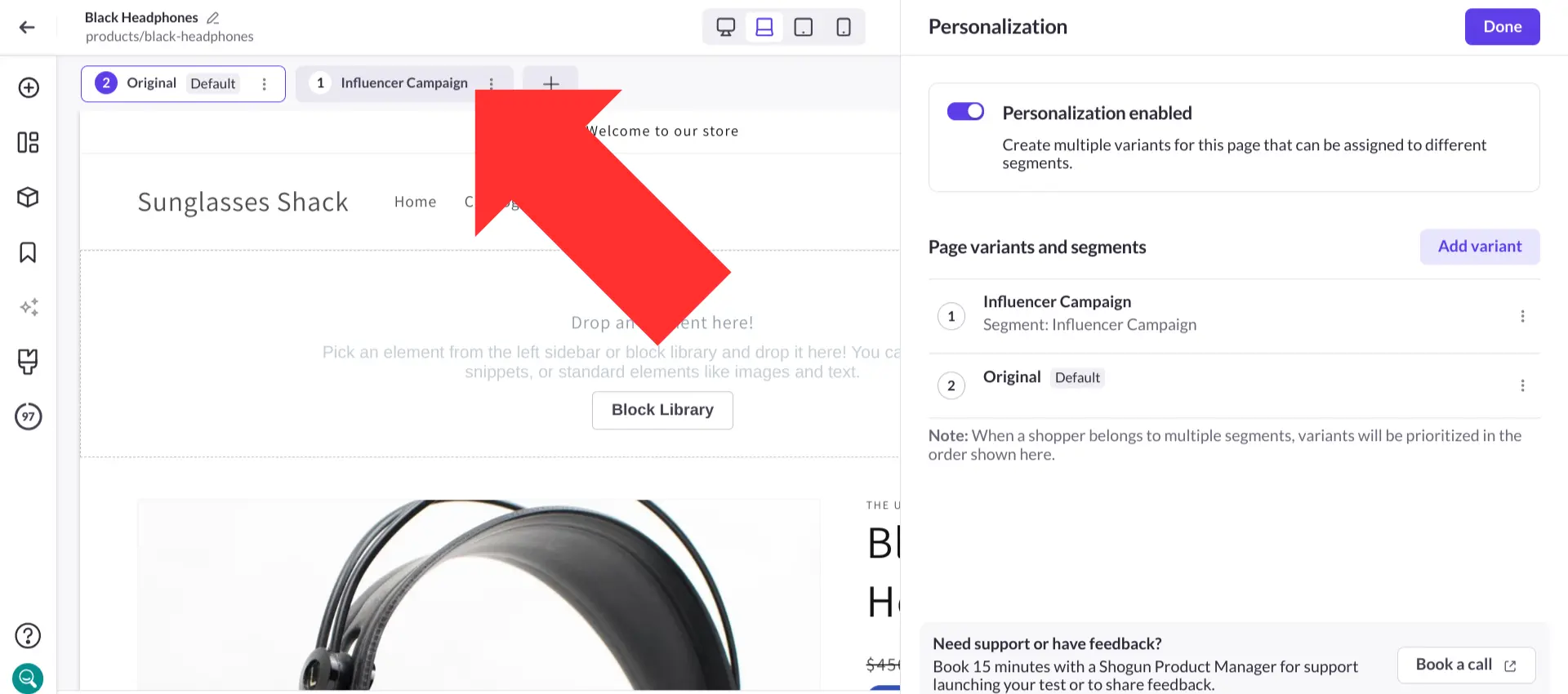
You can use Shogun’s visual editor to customize each page variant however you see fit — in this example, we’ll add a banner image that depicts the influencer enjoying the product. Once you’ve finished making your edits, save your changes and select “Publish all”.
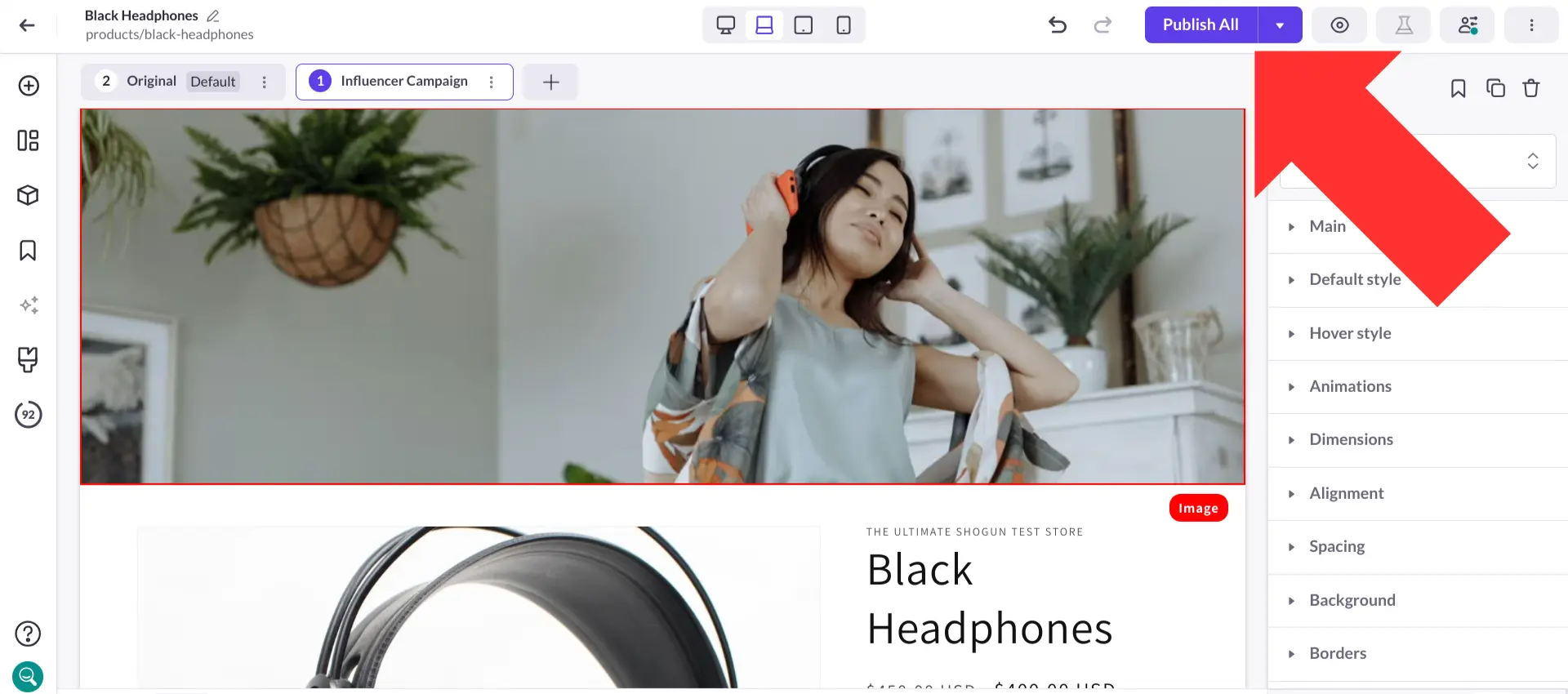
Now, visitors who land on the page from the influencer marketing campaign will be greeted by an image of the influencer while everyone else still sees the original version of the page. This will make those following the influencer feel more connected to your brand without confusing all your visitors who wouldn’t understand this context.
The needs and preferences of your customers often depend on their physical location. Language, customs, weather, and many other local factors can have an effect on which marketing strategies would be most effective for your store. With personalized experiences, you’ll be able to speak to the needs of customers in different locations at the same time.
Even within the same region, province, or state, there can be significant differences between shoppers based on their location. Targeting visitors at the city level is sure to catch the visitor’s attention, as most other stores don’t take personalization this far.
Example #24. Display a customized congratulations message on your homepage for site visitors from a city that just won a championship in a popular sport.
Example #25. Provide special offers for store pickup to site visitors who live close to a brick-and-mortar location.
Stores with an international customer base should consider providing personalized experiences for the different countries they serve. Even when countries share the same language and currency, there may be logistical challenges or other issues that allow you to only offer deals in select areas.
Example #26. Display free shipping banners to site visitors in countries where it’s economically advantageous for your brand while hiding this banner in countries where a free shipping offer would lose more money than it makes.
Example #27. Rather than displaying your overall best-selling products on your homepage, leverage your country-level sales data to display the best-selling products for each country.
Sometimes, the differences between countries aren’t so great, and you may want to target several countries at once. There may also be regulatory reasons for targeting regions, such as making sure you are in compliance with the European Union’s data protection rules when serving countries that belong to this organization.
Example #28. Create segmented experiences for site visitors in certain regions, like the EU, APAC, etc.
Example #29. Bundle countries together and create a connected segment to target shared holidays for promotions.
You can segment site visitors based on the current climate conditions in their area. This is a great technique for brands that sell products that are used outdoors, such as apparel and camping gear.
Example #30. Customize a product collection to feature winter clothing for regions that are currently experiencing cold weather.
Example #31. Whenever it’s summer in the northern hemisphere, it’s winter in the southern hemisphere (and vice versa). Merchants who sell to both of these regions can use personalized experiences to promote summer-related products to visitors located in the northern hemisphere while they promote winter-related products to those in the southern hemisphere.
Most web browsers can automatically translate content into the visitor’s native language — but these automated translations are known to be much less accurate than human translations, as AI often fails to capture cultural context and other nuances. Personalization allows you to improve user experience by taking translation into your own hands.
Example #32. Translate product descriptions manually to ensure you deliver the right translations to the right regions of the world.
Example #33. Translate your homepage content for site visitors from targeted countries.
Example #34. Translate important content like an “About” or brand page for certain regions that have a lot of potential customers.
Above, we showed you how to segment your visitors with UTM tags. That’s not the only way to set up personalized experiences in Shogun — another option is targeting visitors based on their location (specifically, you can target countries, regions, and cities).
It’s also worth noting that you can mix and match different conditions in the same segment as needed. For example, if you wanted to translate sections of your product pages into French, you could create a segment that includes visitors from both France and Quebec.
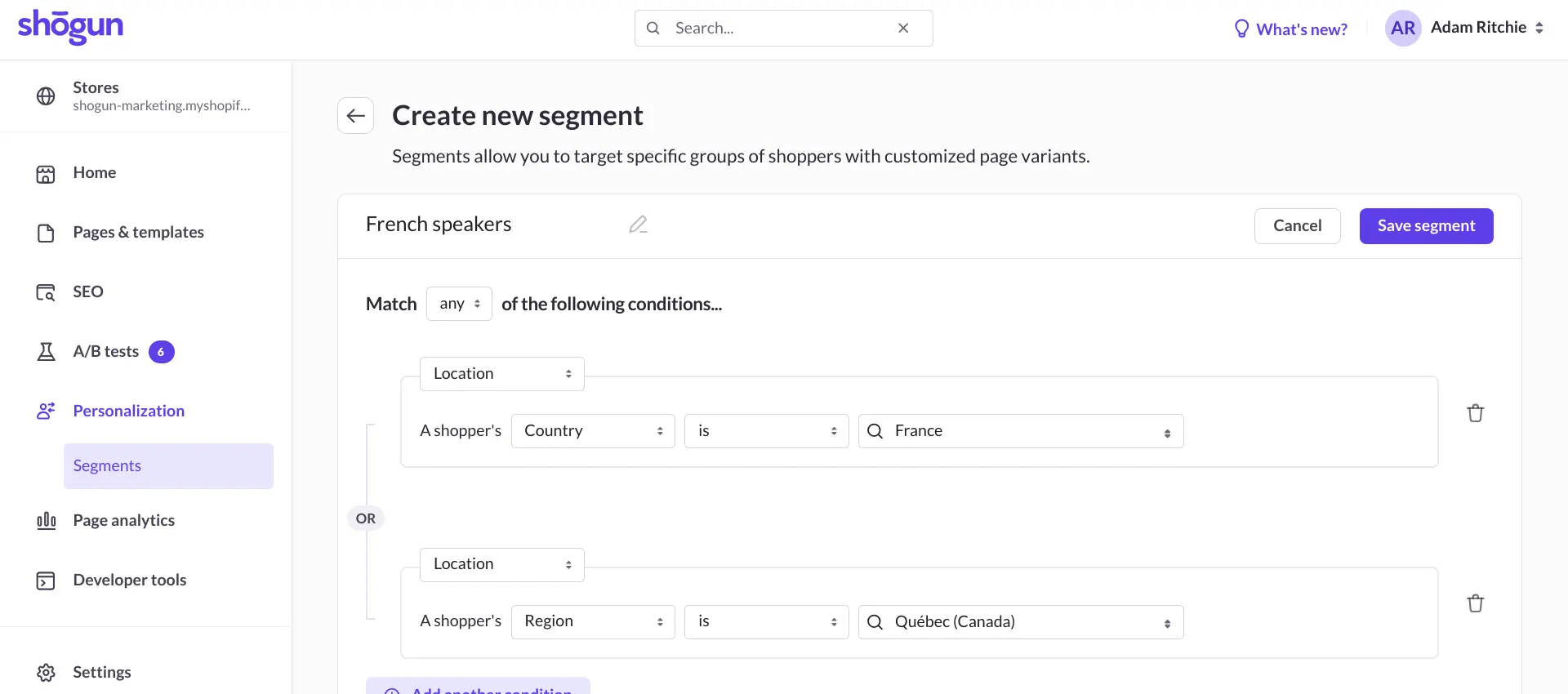
Just as before, you can then make a page variant in Shogun’s visual editor that is only shown to this segment.
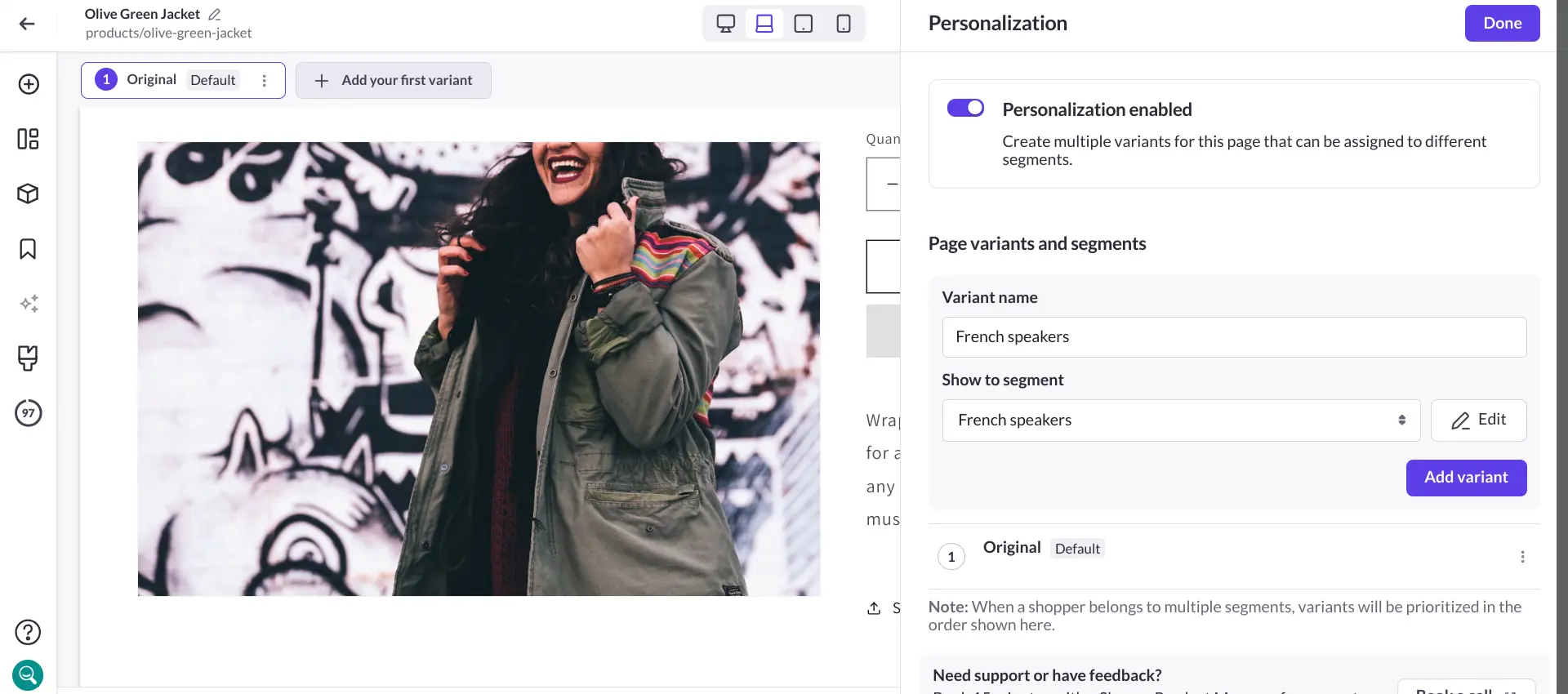
Shogun offers an AI writing tool that makes translating content much easier. First, select the content you want to translate.
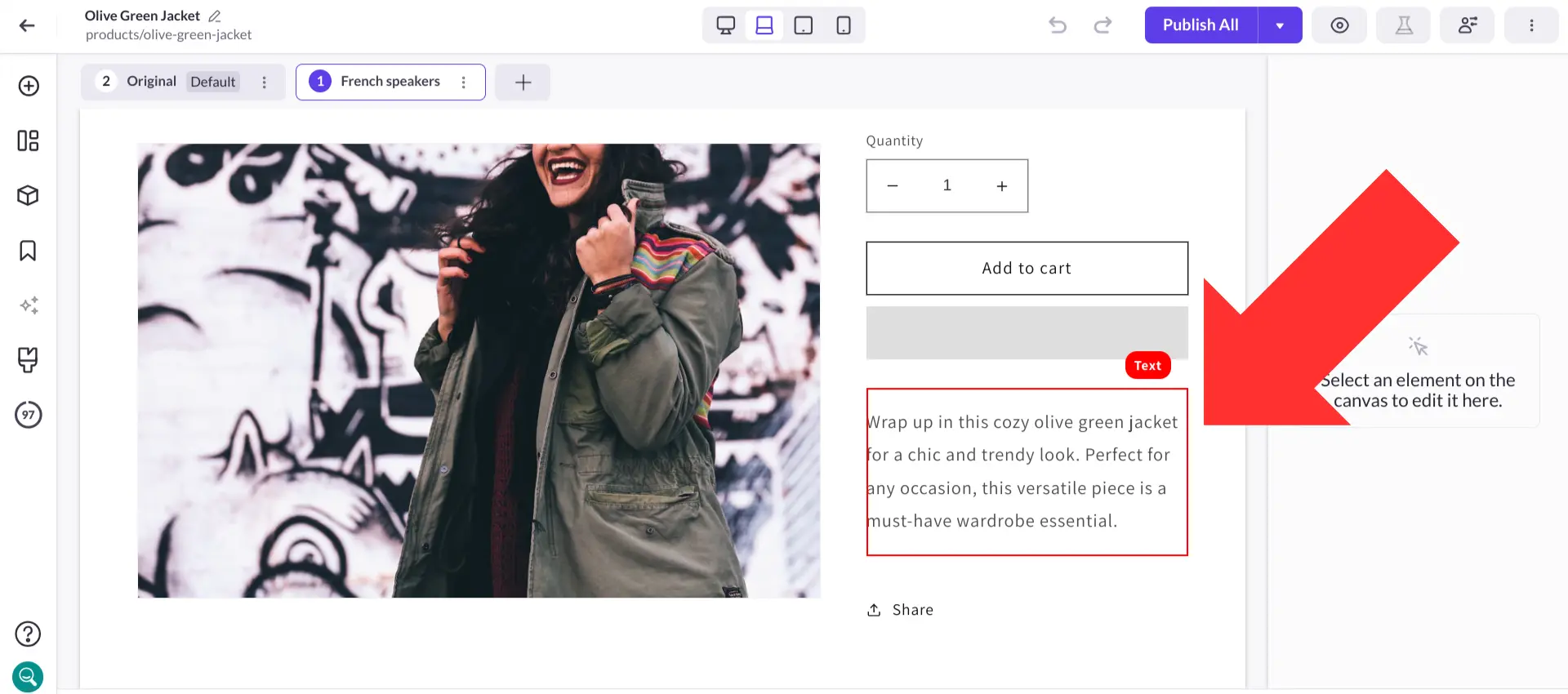
Click on the “Generate text with AI” button.
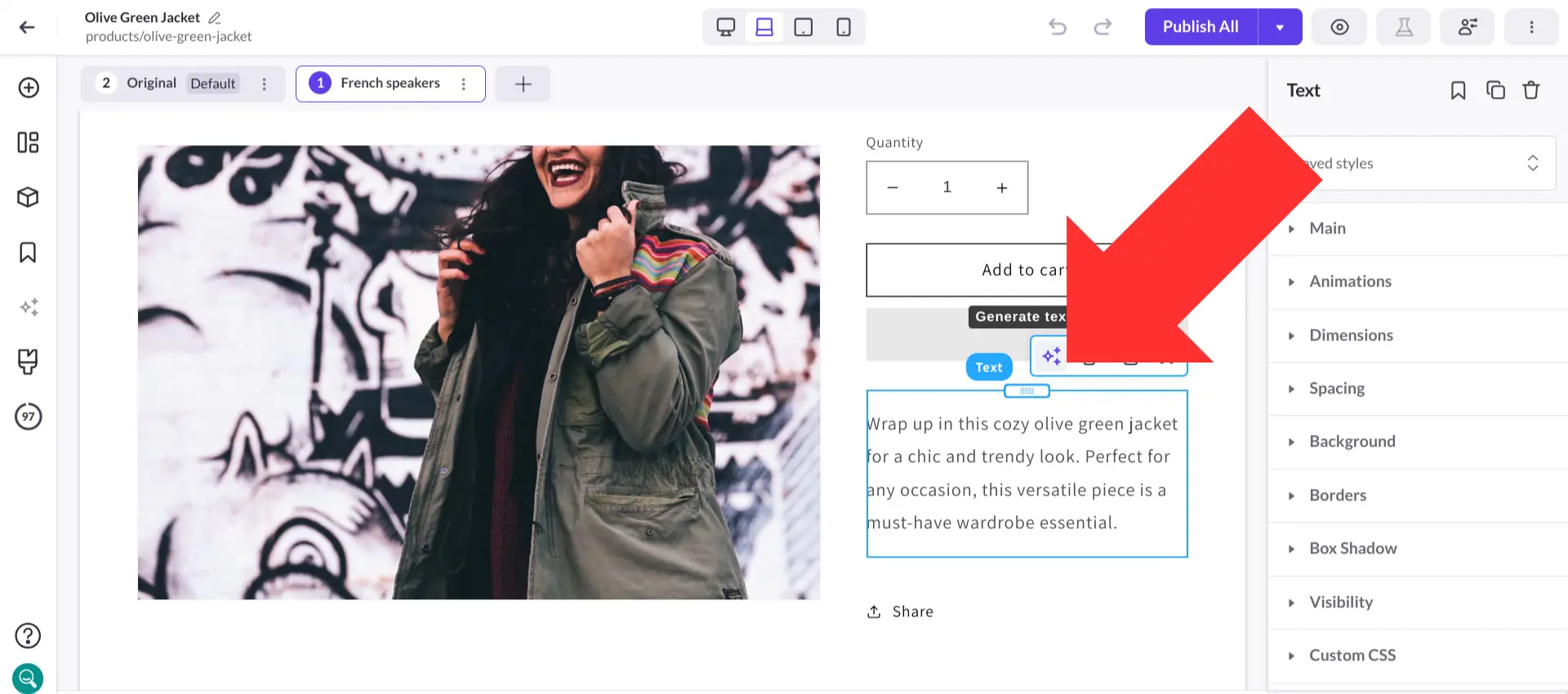
Enter a prompt like “Translate ‘[insert content here]’ into French”, then select “Generate”.
![Enter a prompt like “Translate ‘[insert content here]’ into French”, then select “Generate”.](https://getshogun.com/learn/wp-content/uploads/2024/06/ecommerce-personalization-examples-17.webp)
In just a couple moments, your translation will appear on the page. If you’re not happy with the results, you can manually make any edits you want or hit “Generate” again to start over with a new result.
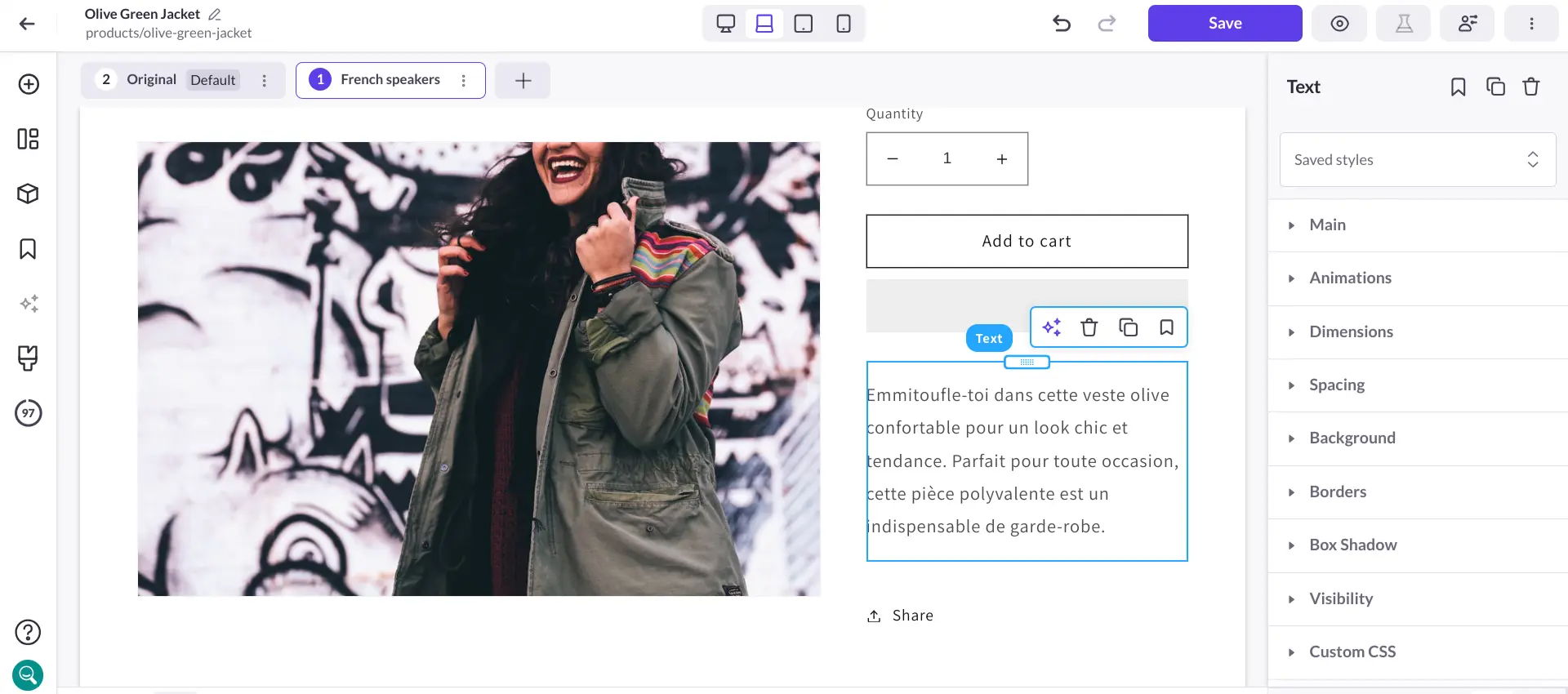
With this method, you’ll have complete control over how your content is translated into other languages, and you’ll be able to whip up the first drafts of your translations quite quickly as well.
Finally, perhaps the most powerful form of personalization is segmenting your customers according to their demographics, preferences, and behavior.
These shopper profiles can make your marketing efforts much more effective. Indeed, this method is especially useful for determining which customers are most likely to make another purchase and what would help you persuade them to do so.
Location is far from the only customer-level data that can help make your store more successful. You can use order details, surveys, and all the other ways you collect information about your visitors to personalize your ecommerce site.
Example #35. Promote special offers to customers based on their birth month.
Example #36. Create segments based on industry or job title for B2B ecommerce brands.
Some visitors may have signed up for specific product alerts from your brand. In addition to sending custom messages to these prospects, you can use personalized experiences to send them to custom pages as well.
Example #37. Create custom segments based on pre-order opt-ins to promote related products on key site pages.
Example #38. Build segmented experiences for out-of-stock alert opt-ins.
Example #39. Use custom fields on a form to ask about which products a visitor is interested in, then create segments and design personalized experiences based on the responses.
Visitors who have already made a purchase on your store before are much more likely to place an order than those who haven’t, so you need to be targeting this segment. Also, you can use information about what someone bought in the past to predict what they will likely want to buy in the future.
Example #40. Customize your homepage to feature complementary products based on a segment’s recent purchase.
Example #41. Reorder the products on a collection page so that they pair well with a segment’s recent purchase.
Shogun also allows you to segment your customers according to purchase history. This is made possible through the built-in integration with Klaviyo.

Once you’ve connected your Klaviyo account, you’ll be able to import any segments you’ve created with Klaviyo customer data and use them to build segments in Shogun.
For example, if someone has already purchased a pair of Nike shoes from your store, you may want to reorder the results of a collection page that features these shoes so that other products are displayed first.
In that case, you would need to create a new page variant to target those who purchased the shoes.
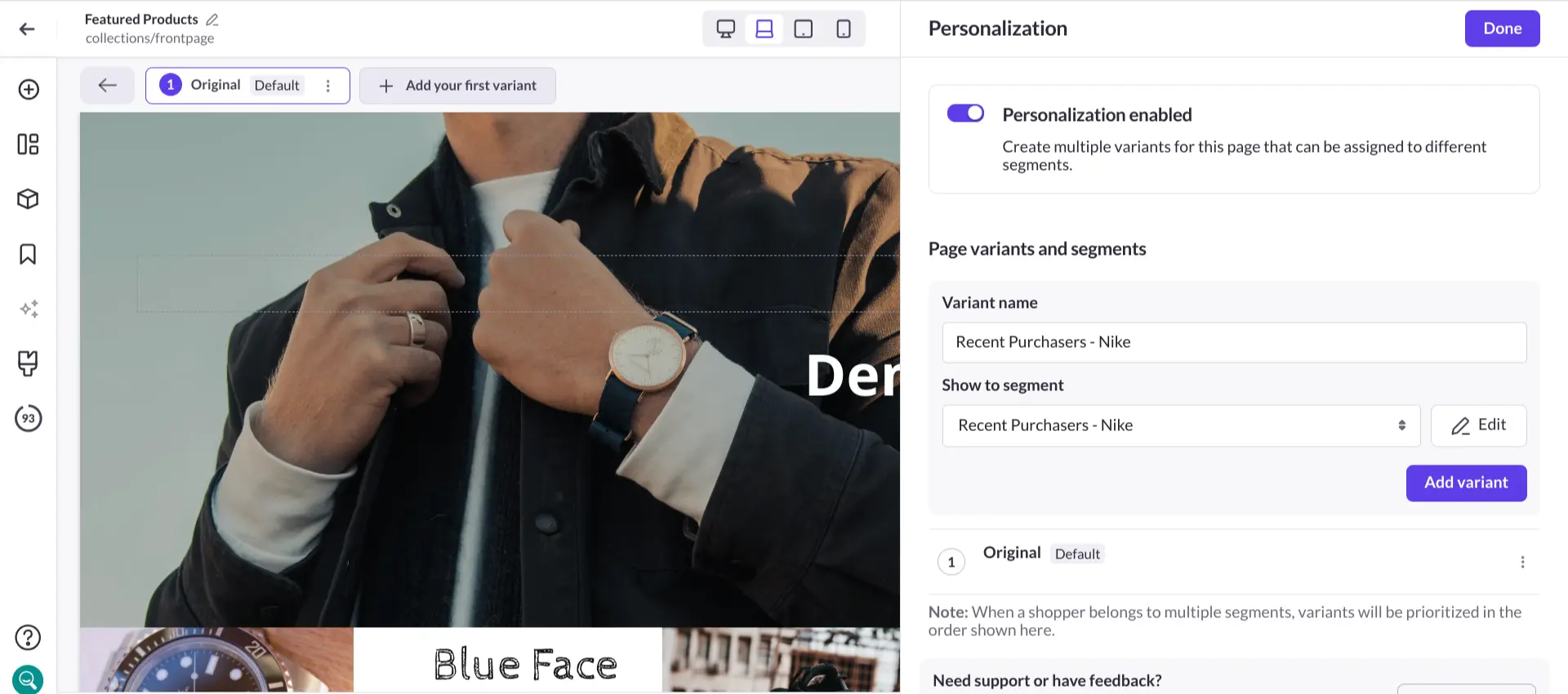
One of the many tools that Shogun gives you to design custom ecommerce pages is the Product Box element, which pulls product data directly from your store. Product Boxes can be used to quickly build out category pages. To change the product that is featured in any given Product Box, simply click on it and select “Change Product”.
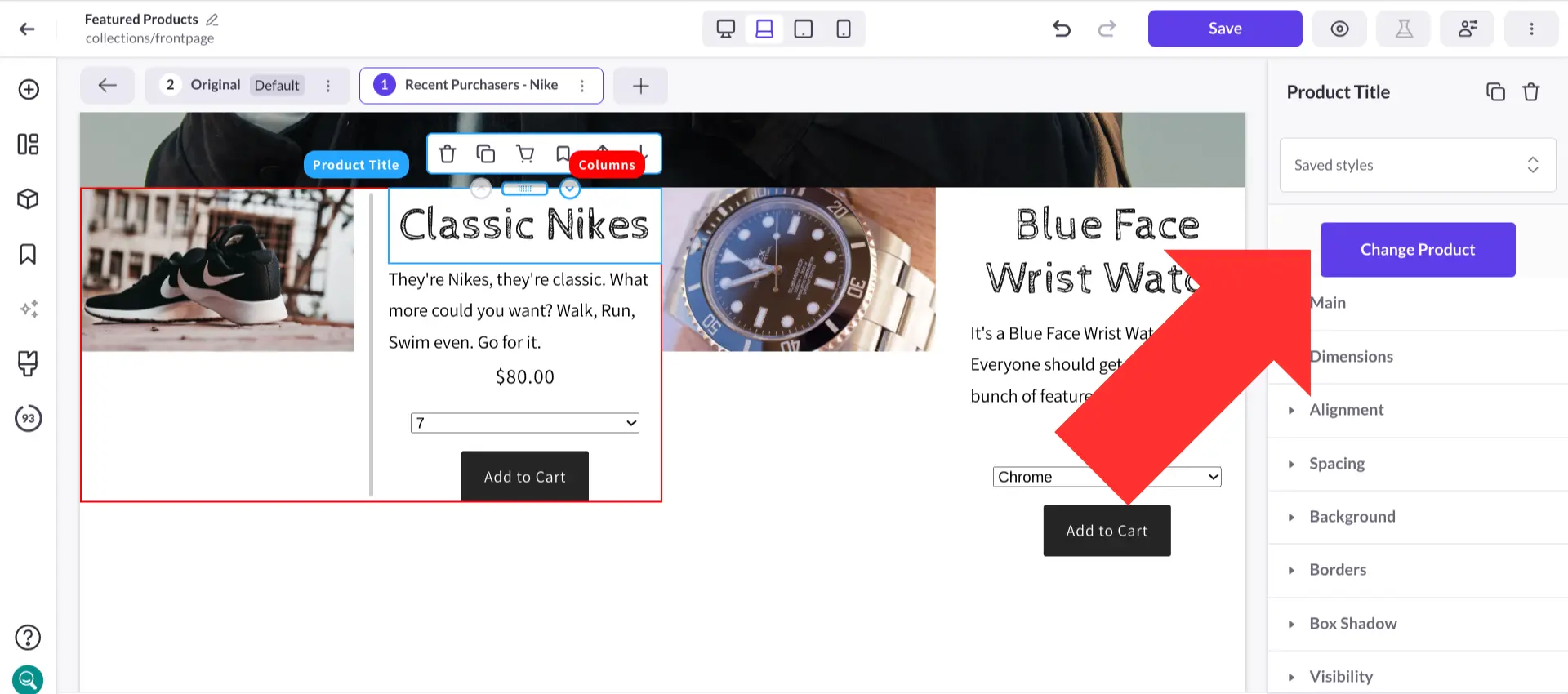
This technique allows you to reorder the results on a category page, and with personalized experiences you can show a certain arrangement to some visitors but not others.
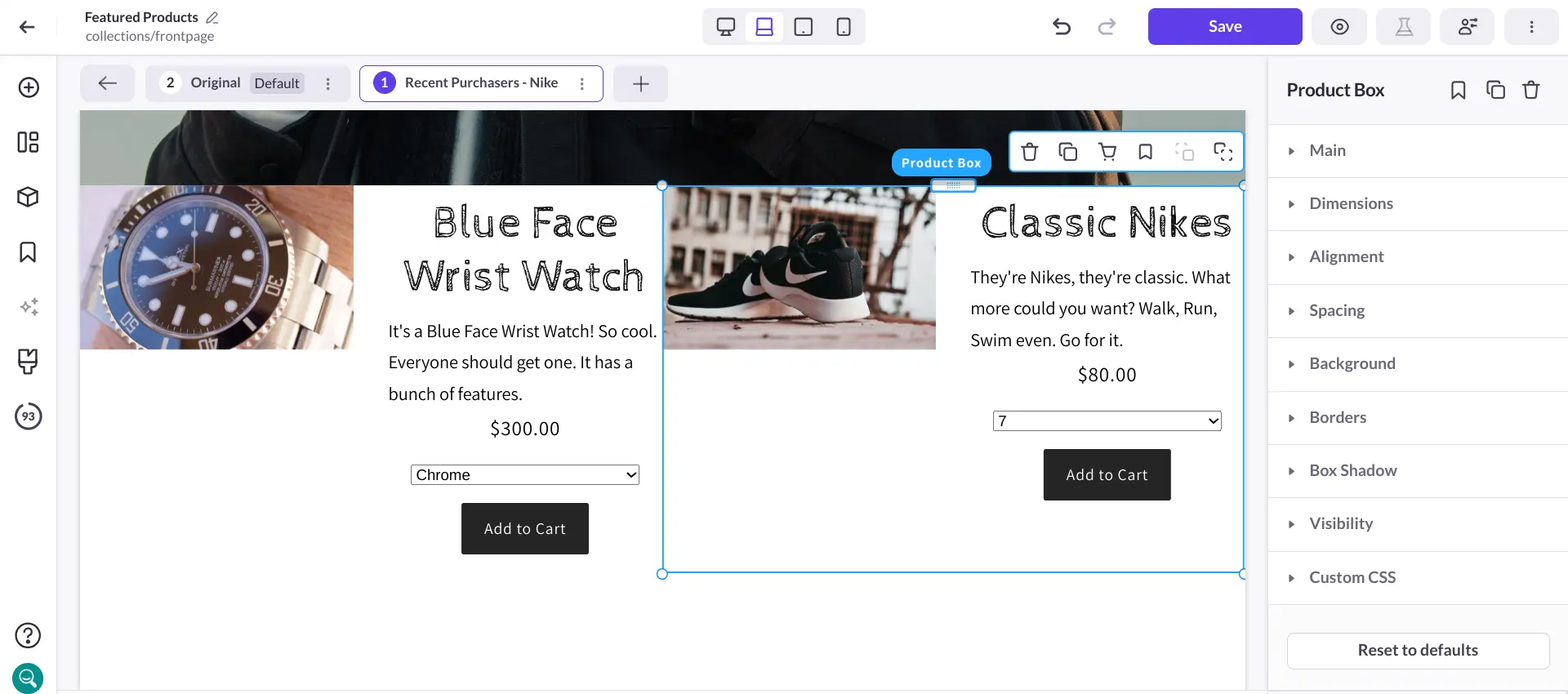
The dashboard camera company Nextbase used this very method to provide a more relevant experience for their shoppers.
They created a segment for customers who had already purchased their flagship product, the Dash Cam. Then, Nextbase used Shogun’s visual editor to design a page variant for this segment promoting Dash Cam accessories rather than the Dash Cam itself (after all, why promote a product to customers who already have it?). This led to an astounding 122% increase in the page’s conversion rate — Personalization can produce similarly impressive results for your store, too.